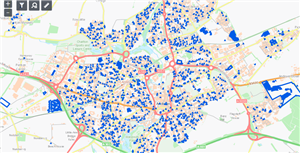Sparkingchip:
Is anyone coding a lack of surge protection on landlords EICRs?
Andy B.
A good point.
Indeed, where on any of the Standard IET based forms would you record the satisfactory presence (or otherwise) of an SPD?
I've only found a passing reference on 4.20 of EICR Inspection record "Confirmation of indication that SPD is functional (651.4)".
GN3 isn't very helpful either.
The 18th was finished in a hurry?
AlanKay:
Original contractor was engaged (he admitted the phantom R2 figure had been arrived at by calculation), on the basis that all reported problems would be fixed and full certification issued.
If you want to be pedantic an EICR is a report; an EIC is a certificate. If you agreed on full certification, that is what you should get.
An EIC is appropriate for a change of CU - Note 1 for an EIC, Appendix 6.
Frankly, I wouldn't split hairs over it. You have the written confirmation that remedial work has been undertaken.
As Simon Barker has pointed out, notification is a separate matter.
AlanKay:
One of those tasks was replacement of the consumer unit for one with RCD incomer.
I hope that's not literally true as whole-house RCDs aren't compliant, and haven't been for several editions/revisions of the Regs.
The Regs require the issue of an EIC or a Minor Works Cert for all work. Building Regs require notification or self-certification of a CU change.
Why are some electricians so thick about the basics? I was doing better that this when I was fourteen.

AlanKay:
Section 16 - schedule, suggests for each RCD; "number of points served = 3".
I DO need to visit and check though; from the way section 16 is completed it appears the second RCD serves 3 spare ways, whilst the other serves cooker, ring, and lights.
"number of points served" does not appear in the model forms of Appendix 6.
If there are only 3 circuits, there is hardly any need for a split board.
We're about to take you to the IET registration website. Don't worry though, you'll be sent straight back to the community after completing the registration.
Continue to the IET registration site